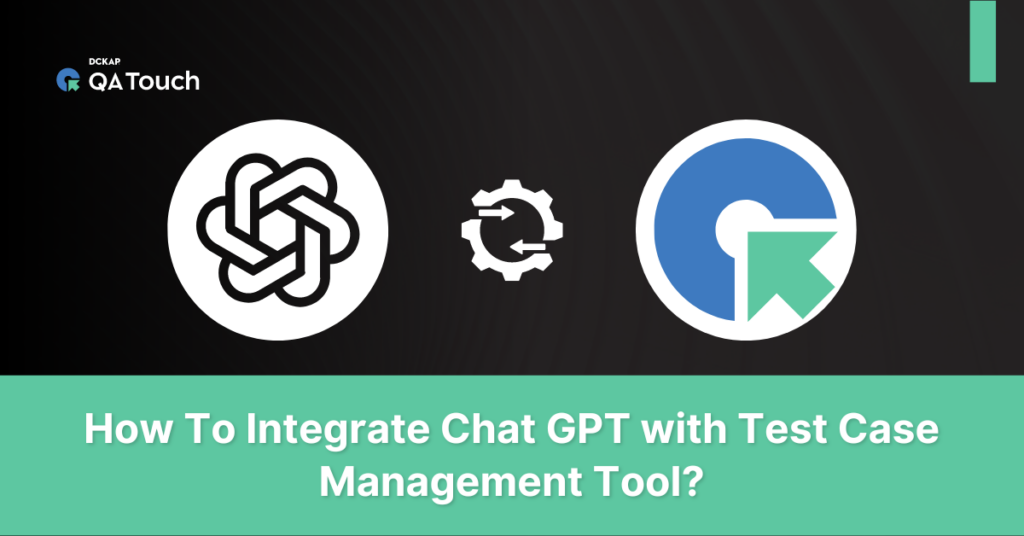QA Touch is Integrated with ChatGPT!!
The day is finally here. After months of undeterred work, we are pleased to announce to our community that QA Touch is now integrated with OpenAI Chat GPT AI Feature in Test Case Management.
This AI feature significantly accelerates the process of writing numerous test cases, primarily focusing on aspects such as description, precondition, steps, and expected results. AI Feature introduced in test management tool.
What is ChatGPT
OpenAI’s ChatGPT is a language model developed by OpenAI, based on the GPT-3.5 architecture. It is part of the GPT (Generative Pre-trained Transformer) series, designed for natural language understanding and generation tasks. ChatGPT is trained using a diverse range of internet text and is capable of understanding and generating human-like text based on the input it receives.
Users can interact with ChatGPT by providing prompts or queries, and the model generates responses accordingly. It is a powerful tool for a variety of natural language processing tasks, including answering questions, generating creative content, providing code snippets, language translation, and more.
AI-powered Test Management
AI-powered test management represents a paradigm shift in the field of quality assurance, offering unprecedented levels of automation, efficiency, and accuracy.
AI continues to evolve, the future of test management holds boundless possibilities for innovation and transformation
Benefits of AI in Test Management:
- Improved Efficiency: AI algorithms automate repetitive tasks, allowing QA teams to focus on more strategic activities.
- Enhanced Accuracy: AI-powered tools can analyze vast amounts of data with precision, reducing the risk of human error.
- Scalability: AI-driven test management solutions can scale to handle complex testing scenarios and large volumes of test cases.
Perks of using ChatGPT for Test Case creation
Using ChatGPT to write test cases can offer several benefits:
Time Saving: With the ability to generate test cases rapidly with ChatGPT users can significantly reduce the time and effort required for test case creation. This is particularly beneficial in projects with tight deadlines.
Resource Optimization: Using ChatGPT for routine test case creation tasks allows human testers to focus on more complex and critical aspects of testing, such as automation test scripts, debugging, and test result analysis.
OpenAI GPT Integration can be blended with QA Touch in a short period, by following the steps below:
- How to generate Personal Access Token in OpenAPI
Note :
1. QA Touch – ChatGPT integration for Free plan user with configurable ChatGPT Token from user end
2. Paid plan – Introduced Pre-configured integration with ChatGPT – No configuration required from user end
How to generate a Personal Access Token in OpenAPI ChatGPT? (Free Plan User generate ChatGPT Token)
- Sign in & head to (https://platform.openai.com).
- Click the API key menu in the sidebar
- After clicking on “Create a new secret key”, give a name to the token in the dialog box.

- After clicking “Create a new secret key”, give a name to the token in the dialog box. Select Permissions->All option

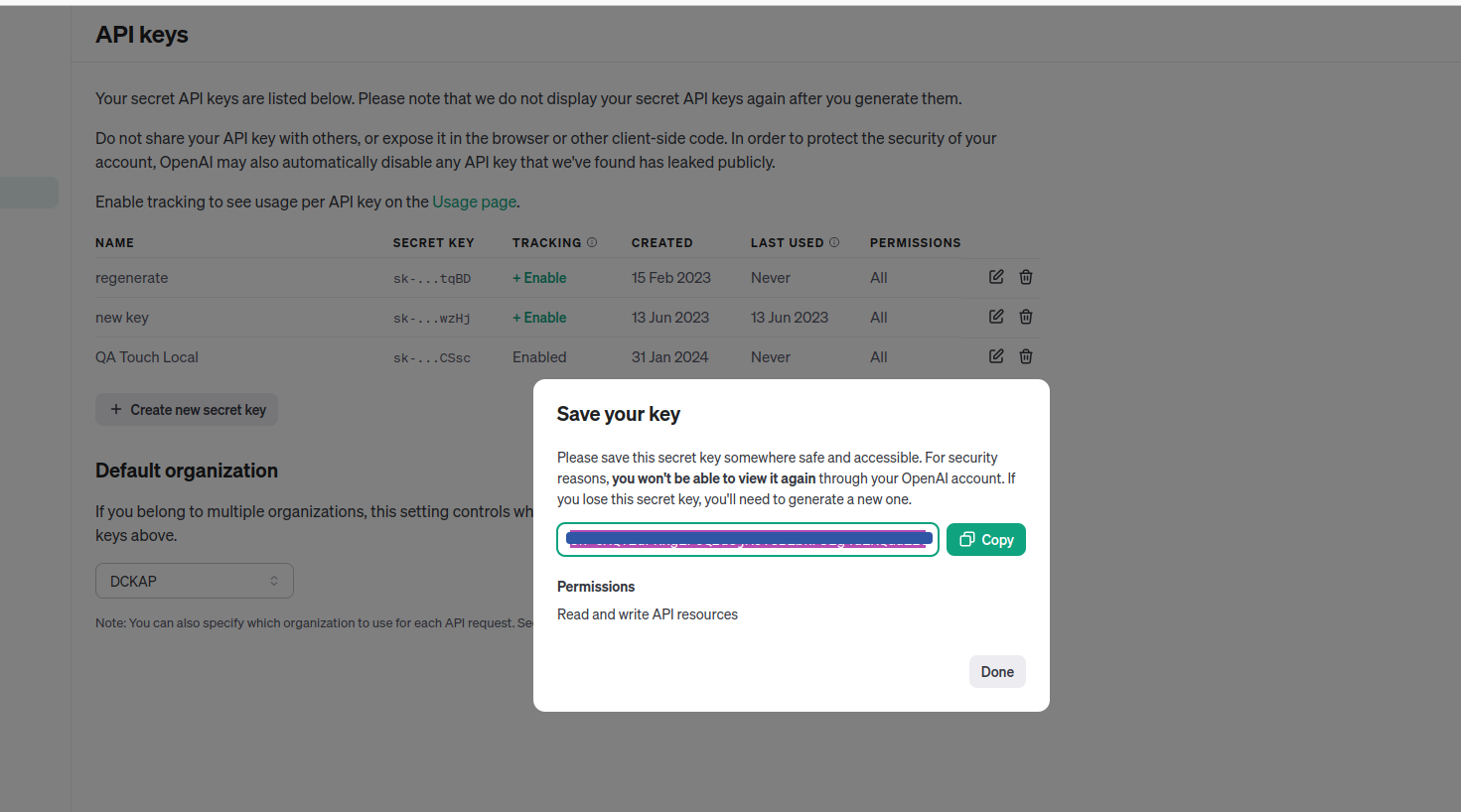
- Token Generated Successfully, Copy the API Token.
QA Touch Global Configuration
- Login to QA Touch.
- In the top right, tap your profile picture.
- Click the “OpenAI ChatGPT Integration” link

QA Touch OpenAI ChatGPT

- Enter OpenAI generated API Key.
- Click the Submit button.
- After successful configuration, the status becomes connected as shown in the below snapshot

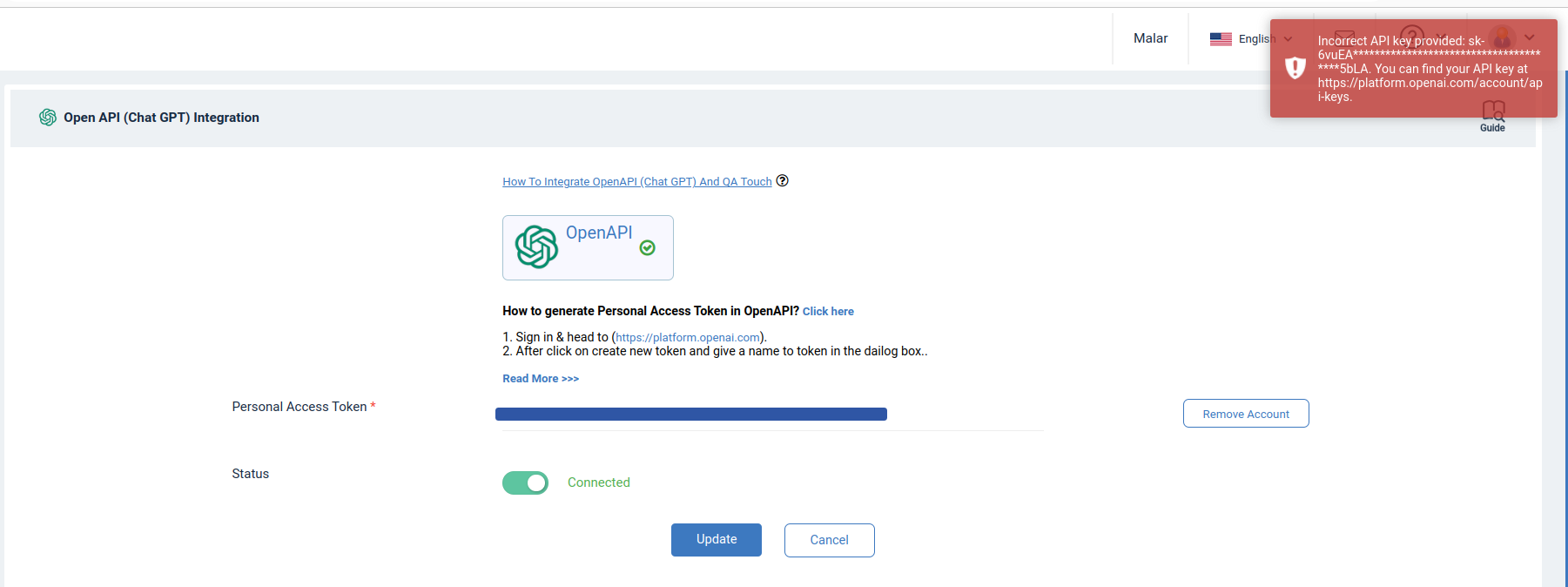
The ChatGPT Token will expire over a period of time. QA Touch – ChatGPT Integration will stop working after the token expires. The user will be notified with a warning message if the token expires.
Warning Message – Chat GPT Token Expired.
To resume the integration, Re-generate a new token and configure it once again in QA Touch
How to use ChatGPT to create Test Cases
QA Touch – ChatGpt Integration is supported in all the 3 Test case Templates
- Exploratory Test Case
- Test Case(Text)
- Test Case(Step)
We made the Time-consuming process of making Test cases efficient by the option to generate your Description, Precondition, Steps, and expected results via ChatGPT. Just Type in the Test case Title QA Touch-ChatGPT does the rest of the job for you.
Generate ChatGPT Response
QA Touch provides Generate ChatGPT Response for 4 essential fields in Test case Description, Precondition, Steps, and Expected results.
- Go to the Test Case page, Click on Project->Test Cases Menu
- In the Case panel, Click on Add and select the template(Exploratory Test Case, Test Case(Text), Test Case(Step))
- Enter Test Case Title
- Click Generate ChatGPT Response on the required field(Description / Precondition / Steps / Expected results) to generate.
- To Clear the response click on Clear Response
- Click Save
ChatGPT Token Expiry
The ChatGPT Token will expire over a while. QA Touch – ChatGPT Integration will stop working after the token expires. The user will be notified with a warning message if the token expires.
Warning Message – Chat GPT Token Expired.
To resume the integration, Re-generate a new token and configure it once again in QA Touch
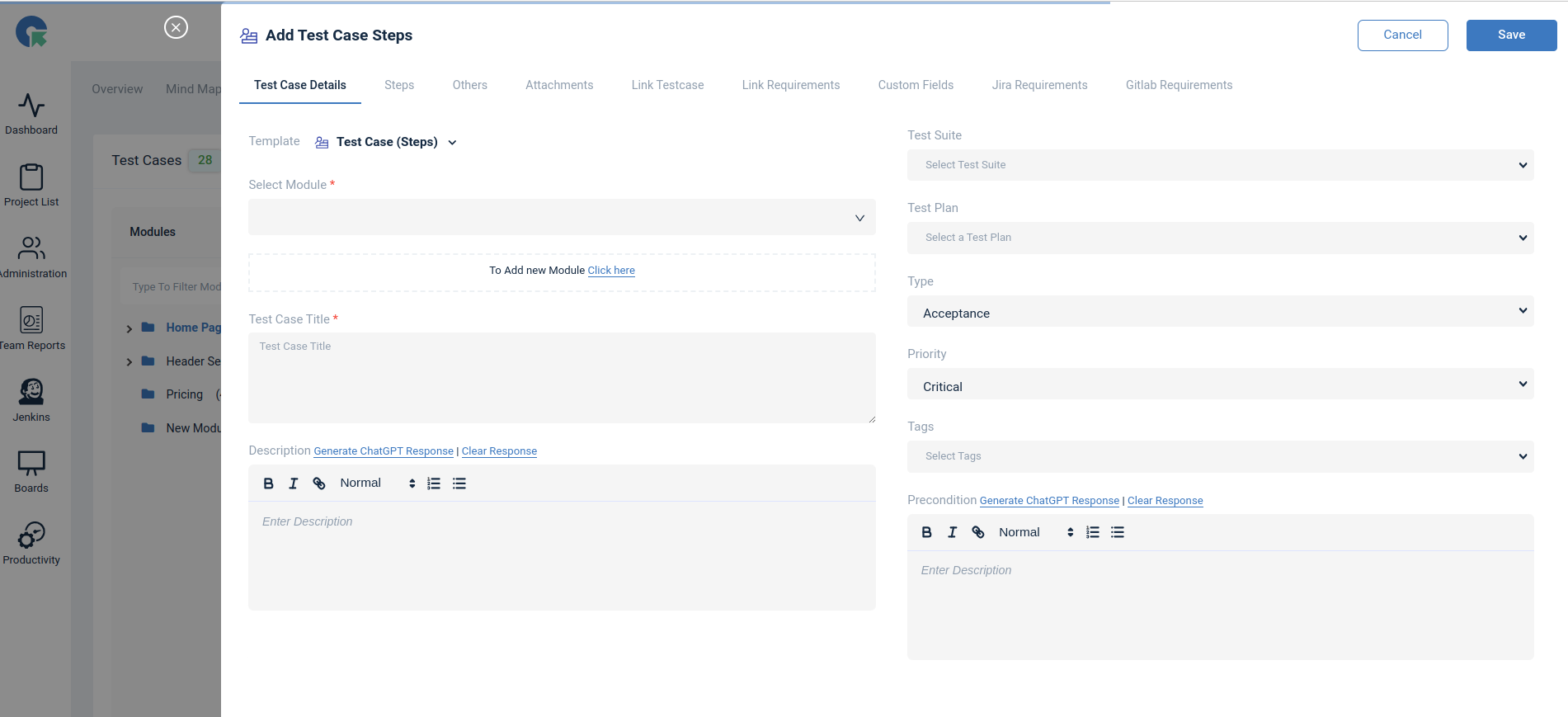
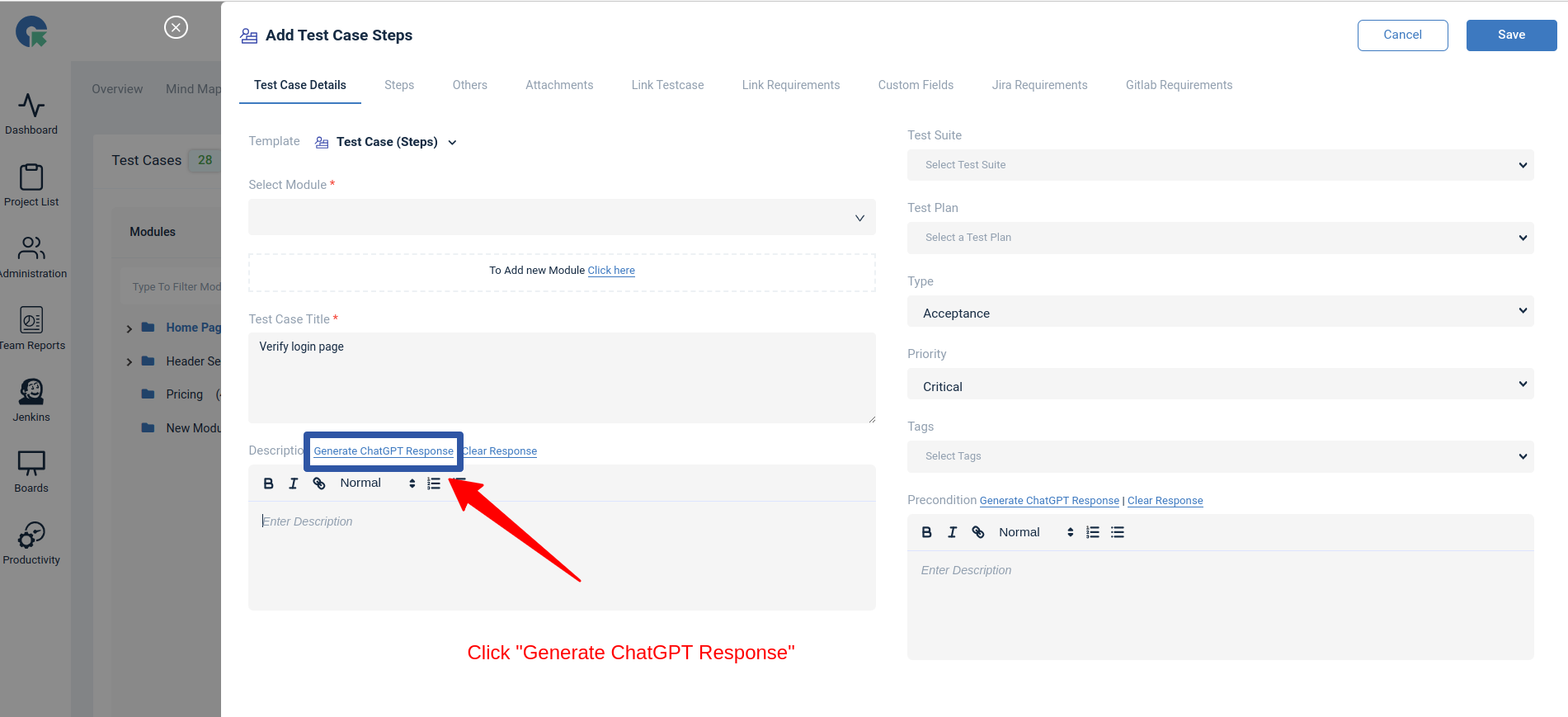

Test Case(Text) Template

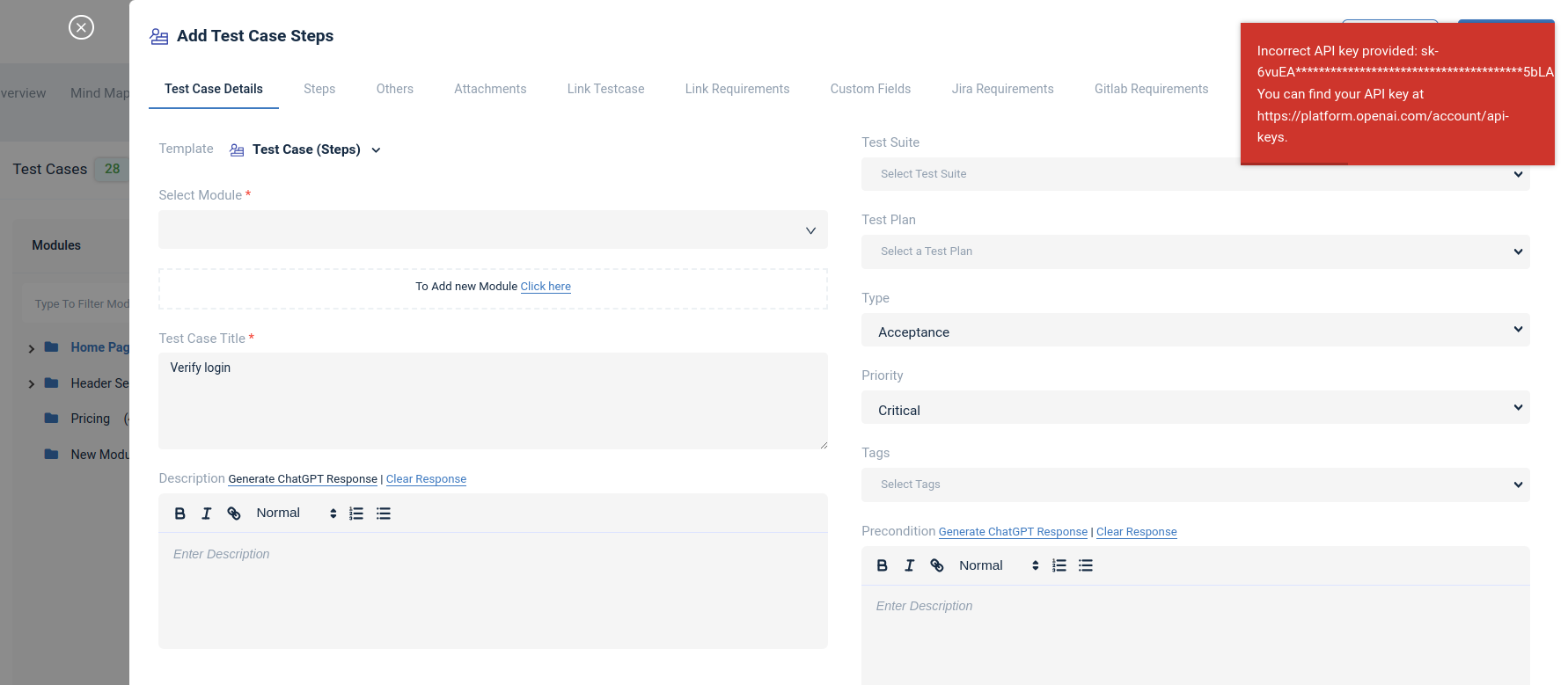
We hope this blog helped you understand the process of how integration should be done between ChatGPT AI Integration and QA Touch.
This integration is just the beginning of a lot more platforms with which we plan to collaborate in the near future to make testing accessible for all.
Start your 14-day free trial and be the master of your application testing.

